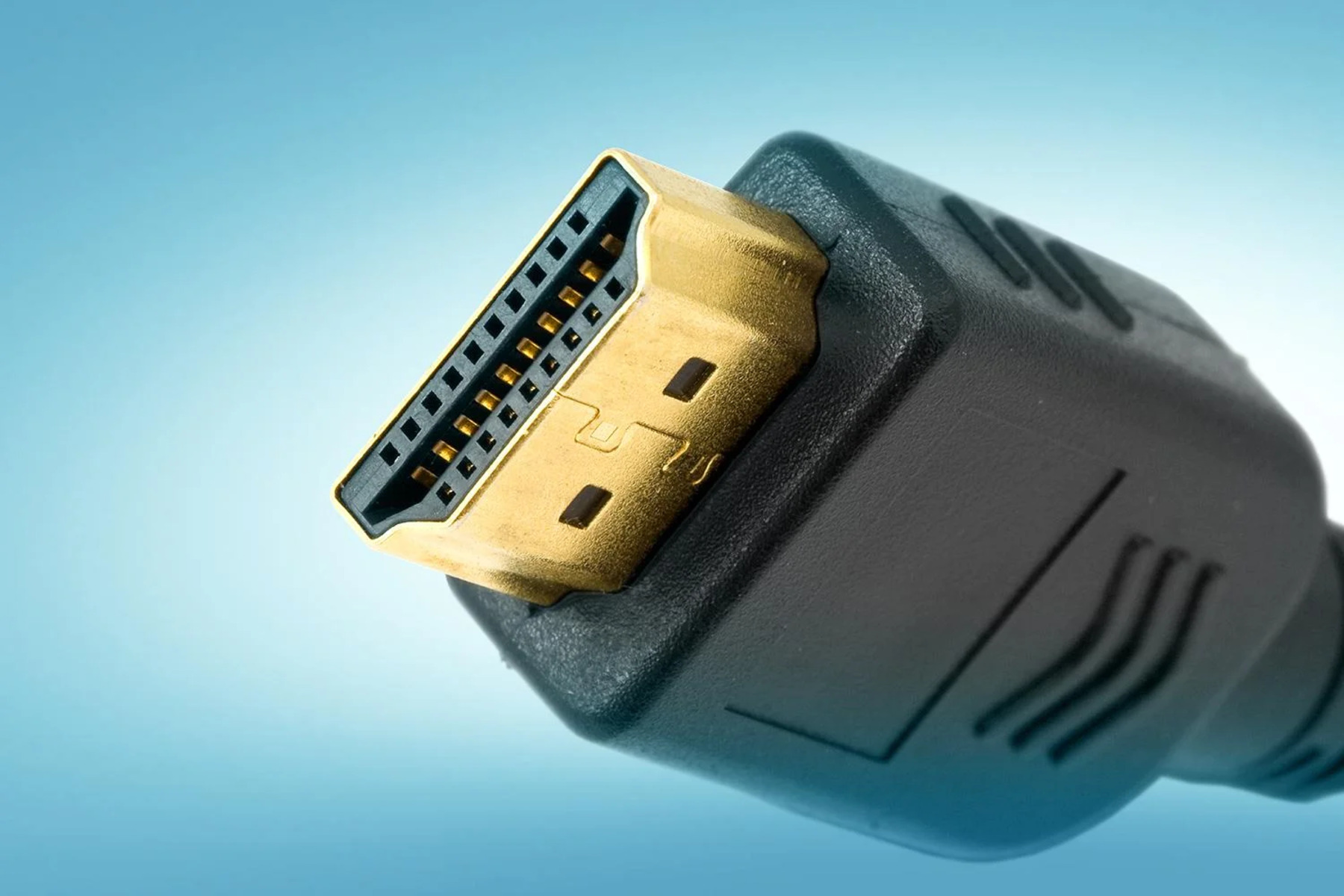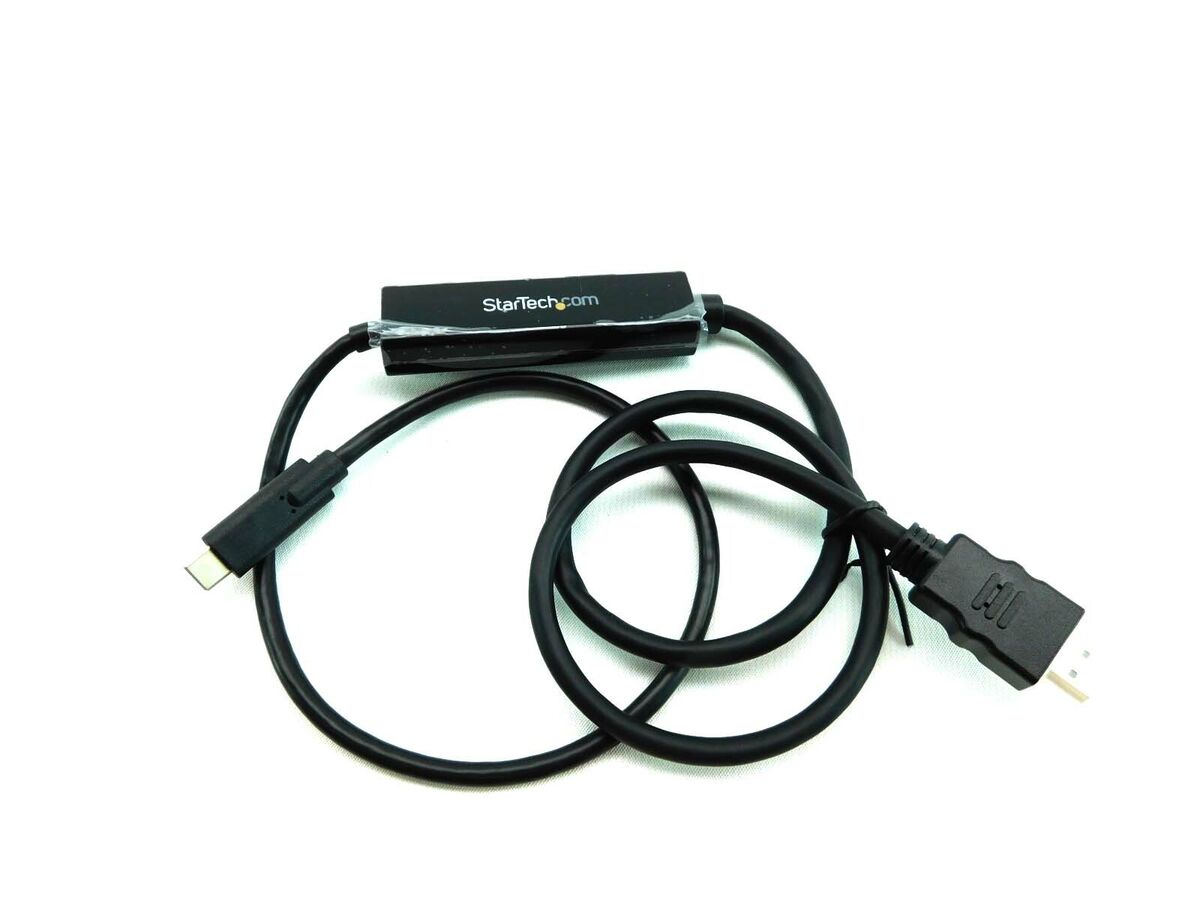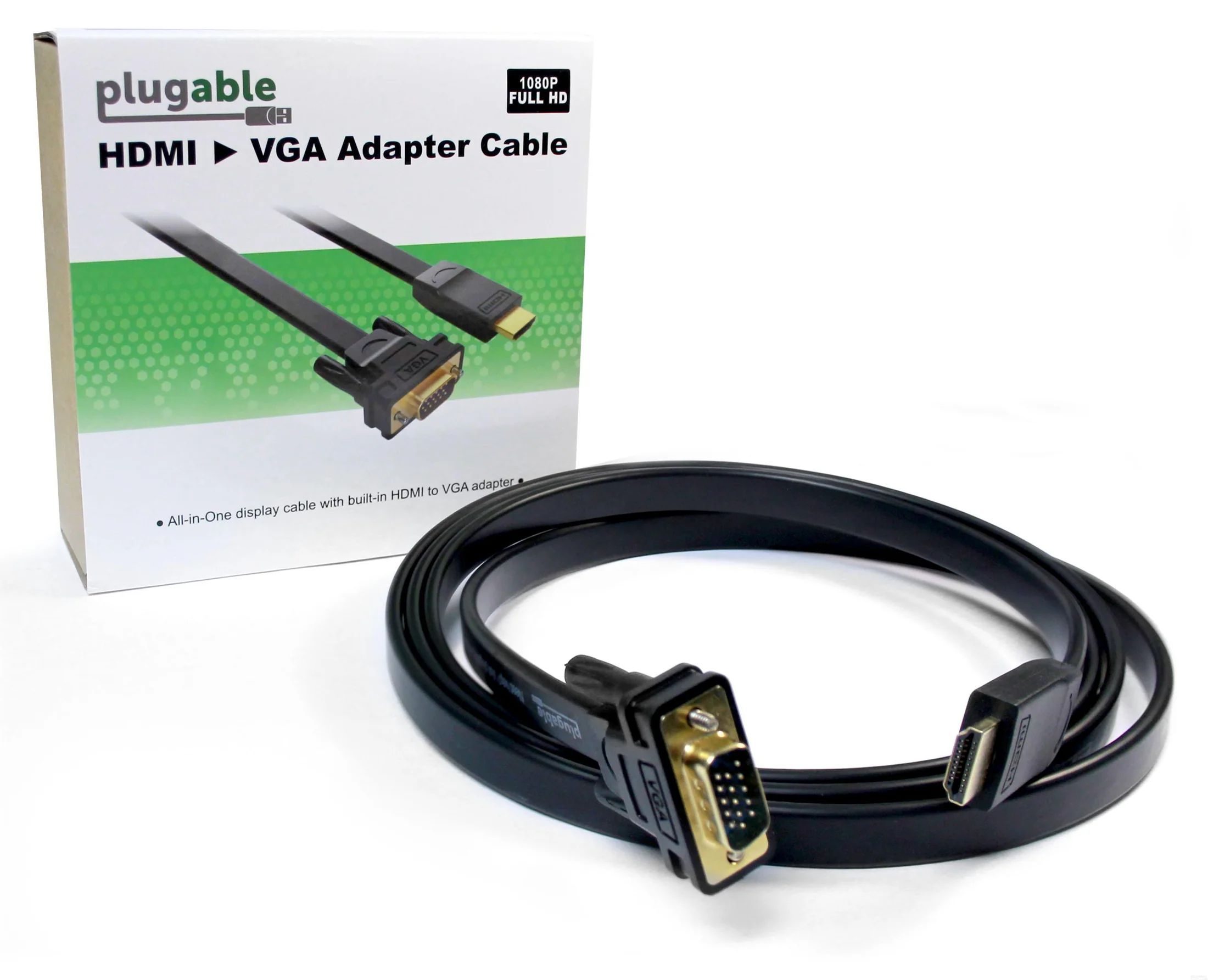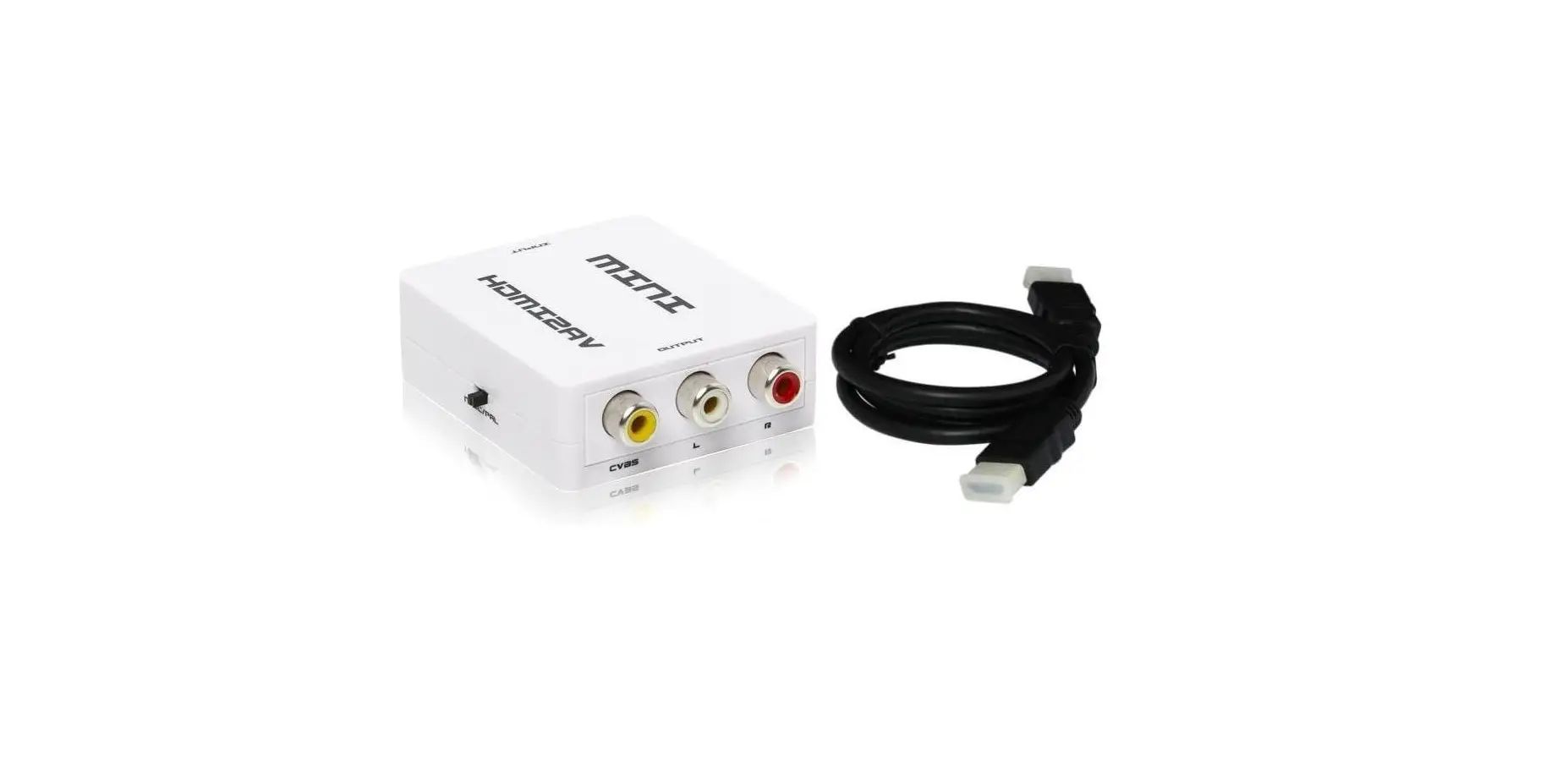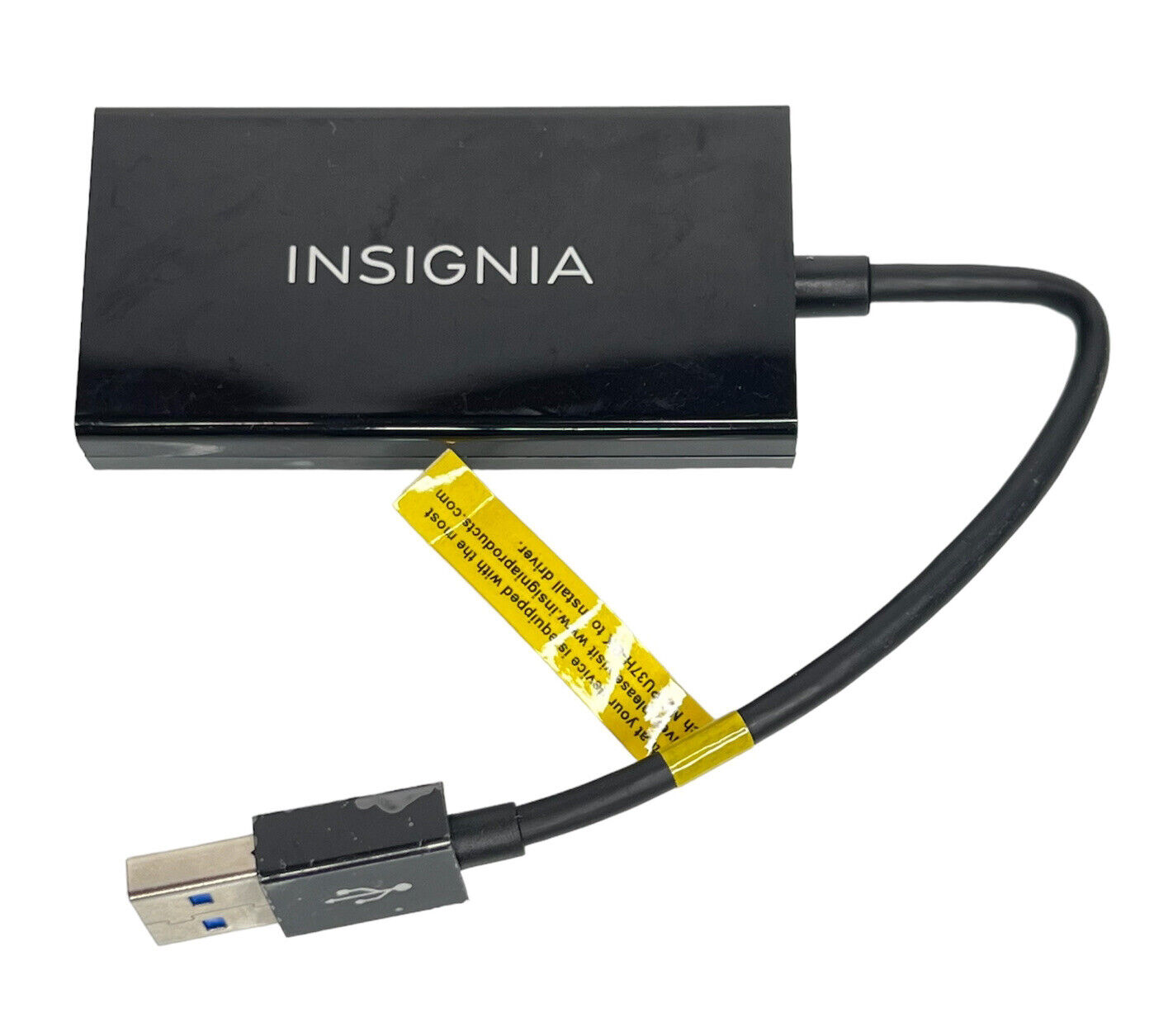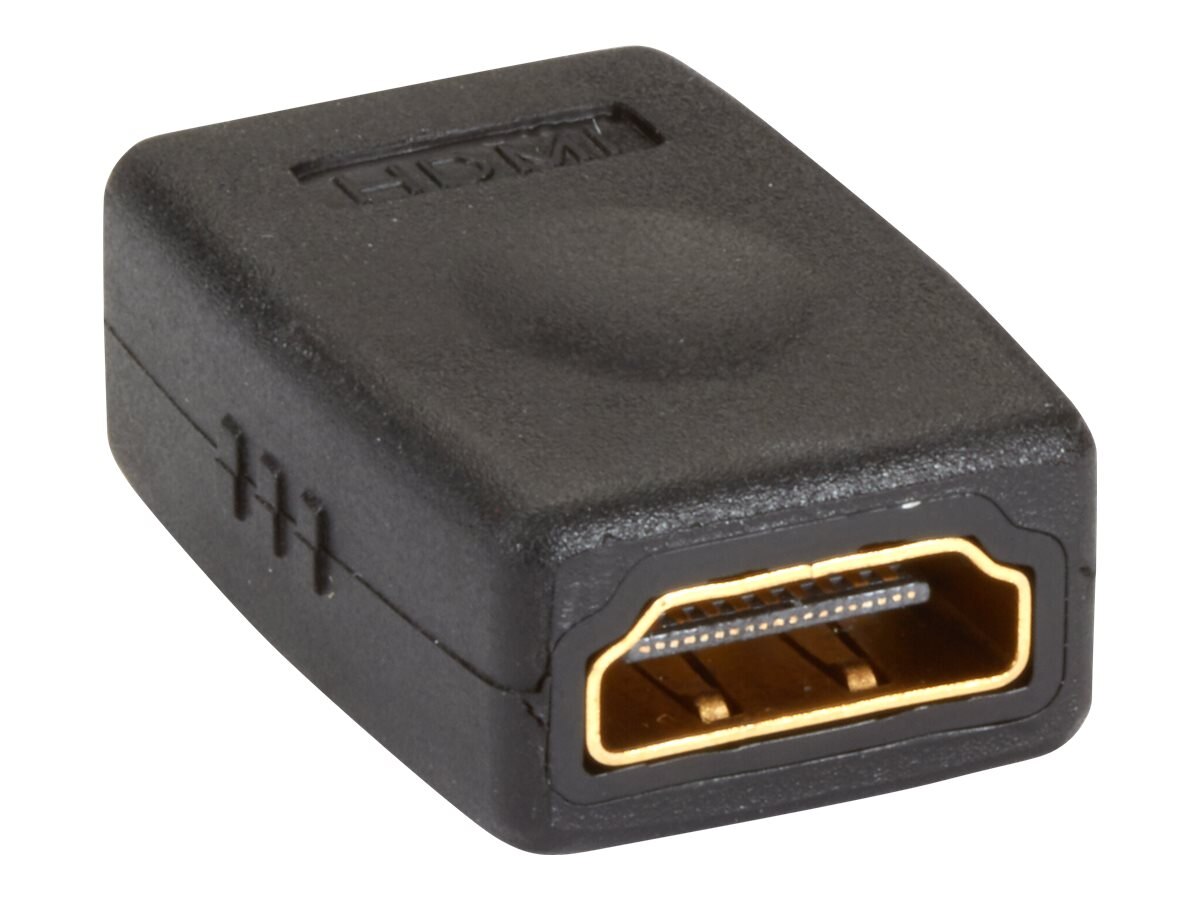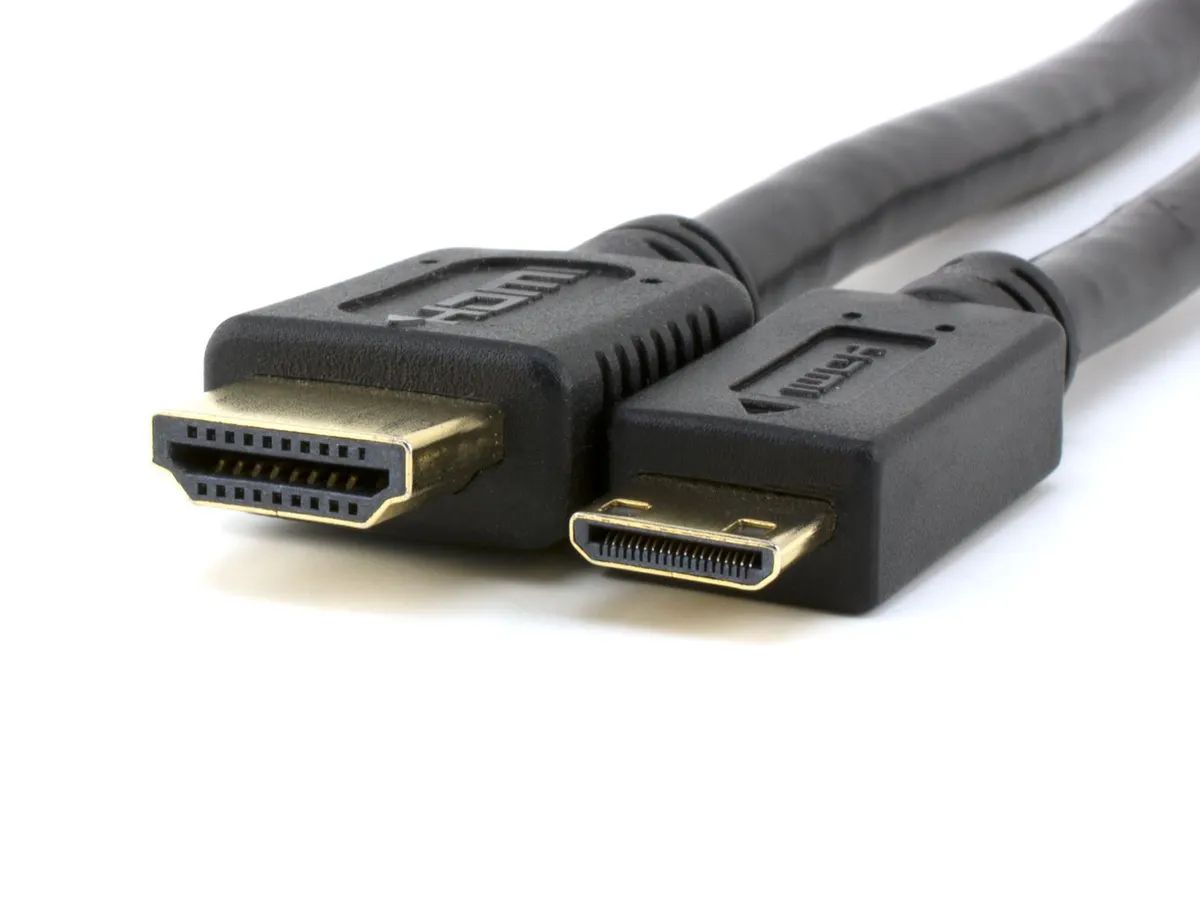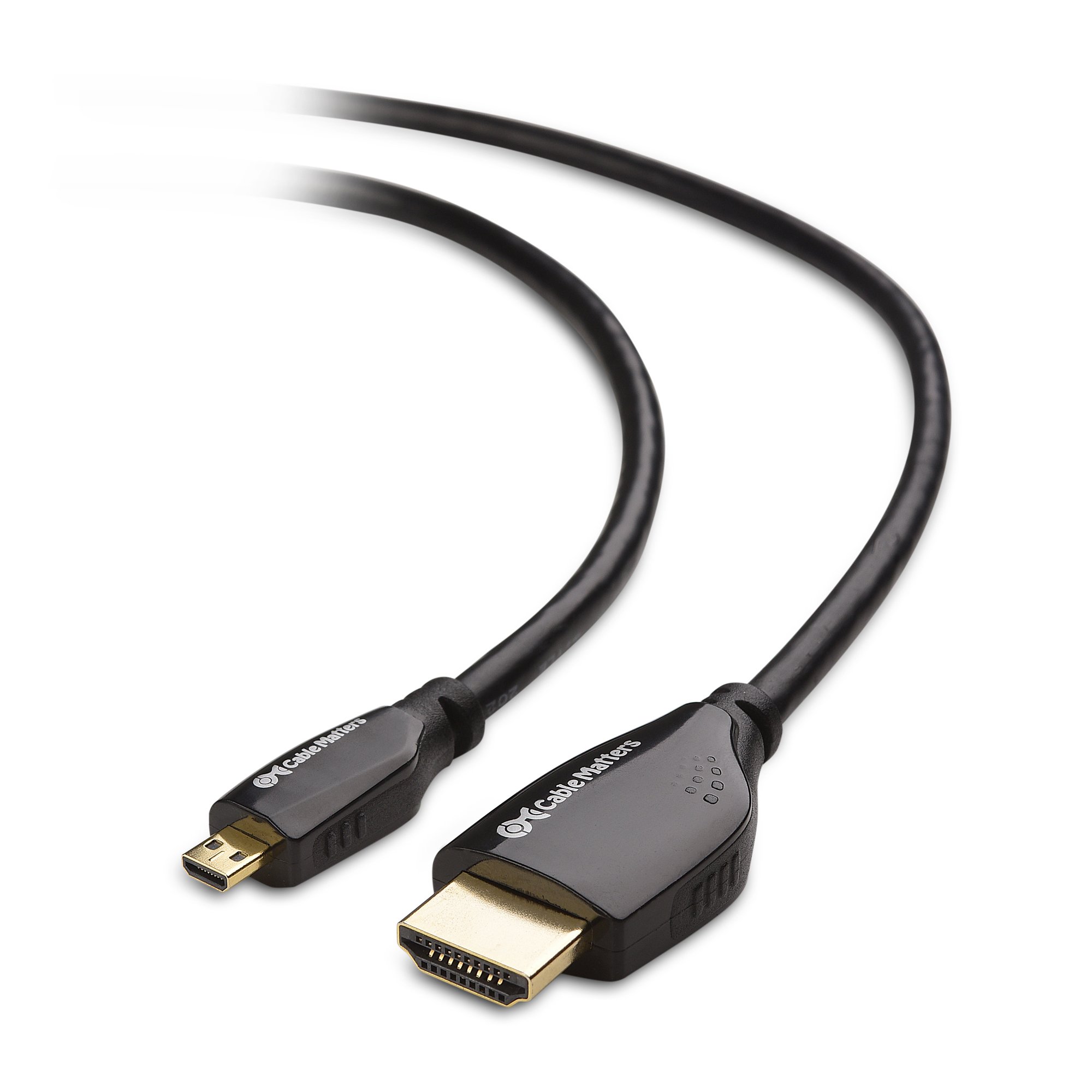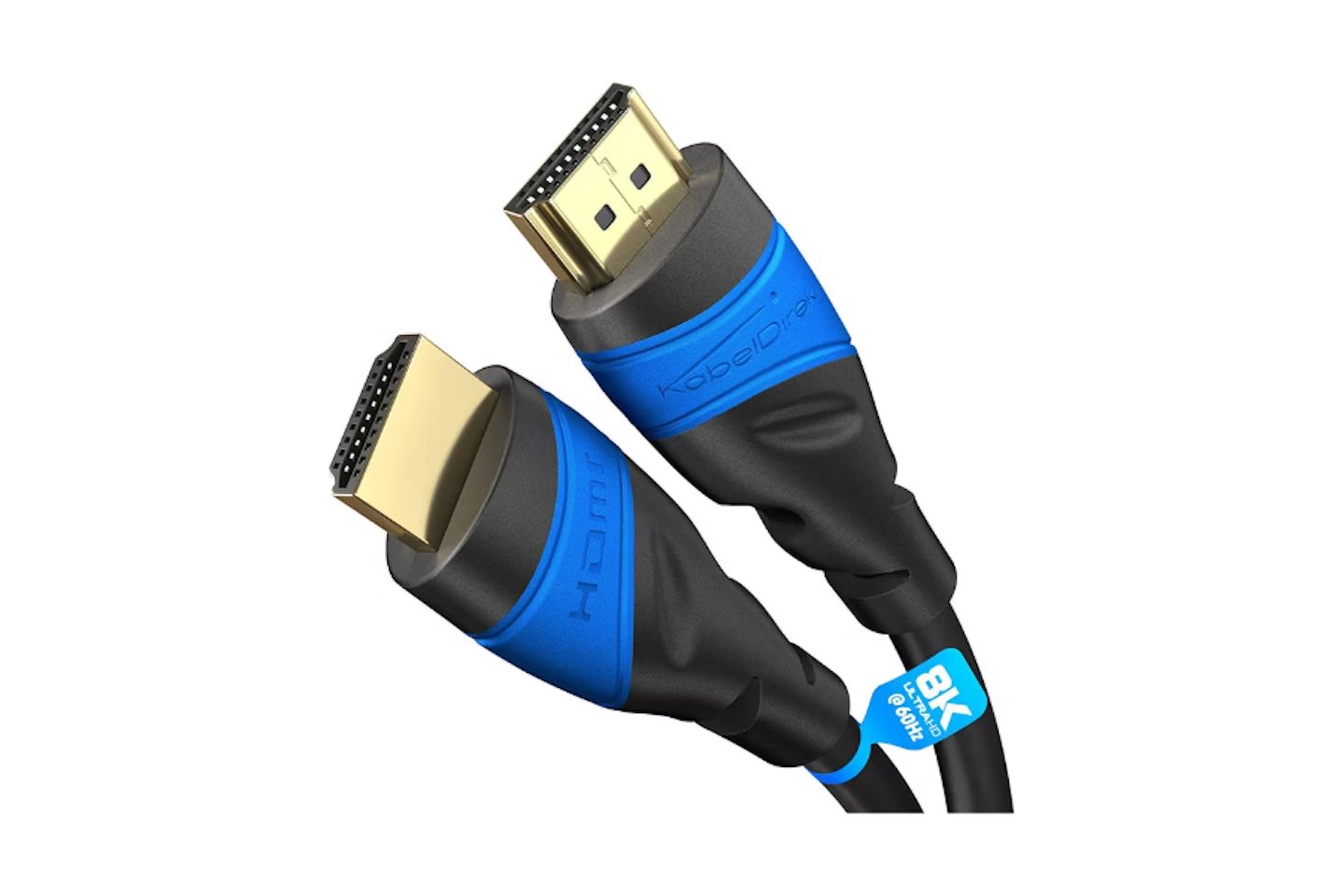Introduction
The advent of modern technology has revolutionized the way we consume media. From streaming movies and TV shows to playing video games, we rely on various devices to deliver high-quality audio and video content. One crucial component that enables this seamless connectivity is the HDMI cable.
HDMI, short for High-Definition Multimedia Interface, has become the standard for transmitting both audio and video signals. It has replaced the traditional analog connections, such as VGA and RCA cables, due to its superior quality and ease of use. Whether you’re connecting your TV to a gaming console, DVD player, or streaming device, the HDMI cable plays a crucial role in delivering stunning visuals and immersive sound.
In this article, we will delve into the world of HDMI cables and explore their functionality, types, compatibility, and advantages. Whether you’re a tech enthusiast or a casual user, understanding the purpose and benefits of HDMI cables will help you make informed decisions when it comes to setting up your entertainment system.
So, let’s dive in and unravel the mysteries of HDMI cables, and discover why they are the go-to choice for audio and video transmission in the digital age.
What is HDMI?
HDMI, or High-Definition Multimedia Interface, is a digital audio and video interface that allows for the seamless transmission of high-quality signals between devices. Developed in the early 2000s, HDMI has become the standard for connecting various devices, including televisions, monitors, projectors, gaming consoles, Blu-ray players, and more.
Unlike its analog predecessors, such as VGA and RCA cables, HDMI utilizes a digital signal, which results in a sharper and more vibrant picture quality. It supports high-definition resolutions up to 4K Ultra HD and even higher in some cases. Alongside video, HDMI also carries multiple channels of audio, including surround sound formats like Dolby Atmos and DTS:X, ensuring an immersive audiovisual experience.
HDMI cables consist of several data channels that transmit audio and video in a single cable. These cables utilize advanced digital encoding techniques, eliminating signal degradation and interference that can occur with analog connections. Alongside the primary audio and video channels, HDMI cables also support additional features like Ethernet connectivity, allowing for internet connection sharing between devices.
One of the key advantages of HDMI is its ability to transmit both audio and video through a single cable. This simplifies the setup process and reduces cable clutter, making it a user-friendly option for connecting devices. Additionally, HDMI cables support two-way communication between devices, enabling features like device control and audio return channels.
Overall, HDMI has revolutionized the way we connect and experience our favorite entertainment devices. Its digital capabilities, high-definition transmission, and versatility make it an essential component in modern audio and video setups.
How does HDMI work?
HDMI operates on a digital transmission system, allowing for the seamless and efficient transfer of audio and video signals between devices. The technology behind HDMI involves encoding and decoding digital data, ensuring a high-quality, uncompressed transfer of information.
When you connect two devices using an HDMI cable, such as a Blu-ray player and a television, the HDMI interface on each device recognizes and establishes a connection. This connection sets the foundation for the exchange of audio and video data.
Once the connection is established, the HDMI-enabled source device, like the Blu-ray player, converts its audio and video signals into a digital format suitable for transmission. This encoding process ensures that the original audio and video data remain intact and of the highest quality.
The encoded digital data then travels through the HDMI cable, taking advantage of multiple data channels within the cable to carry separate streams of information. These channels include separate pathways for audio, video, and additional features like Ethernet and device control signals.
Upon reaching the receiving device, such as the television, the HDMI interface decodes the transmitted digital data and converts it back into the original audio and video format. This decoding process ensures that the audio and video signals are accurately reproduced without any loss of quality.
Due to its digital nature, HDMI offers several advantages over analog connections. Digital transmission eliminates the signal degradation and loss of quality that can occur with analog signals, resulting in a sharper, clearer picture and higher fidelity audio.
Furthermore, HDMI also supports various audio and video formats, including high-definition resolutions up to 4K Ultra HD, deep color, 3D content, and HDR (High Dynamic Range) for enhanced color and contrast. This versatility makes HDMI capable of handling the most demanding audio and video content available today.
In summary, HDMI works by encoding digital audio and video signals, transmitting them through multiple data channels within the HDMI cable, and decoding them at the receiving device. This digital transmission system ensures high-quality, uncompressed audio and video transfer, providing users with an unparalleled audiovisual experience.
What does an HDMI cable do?
At its core, an HDMI cable serves as a bridge between audiovisual devices, facilitating the transmission of high-quality digital audio and video signals. It allows you to connect devices like televisions, monitors, projectors, gaming consoles, Blu-ray players, and more, enabling the transfer of audio and video data.
When you connect two devices using an HDMI cable, it establishes a direct link between them, allowing for seamless communication. The HDMI cable carries both audio and video signals, eliminating the need for separate audio and video cables, simplifying the setup process, and reducing cable clutter.
An HDMI cable acts as a conduit for the transfer of uncompressed audio and video data, ensuring that the original quality of the content remains intact. This is particularly crucial for high-definition content, as HDMI supports resolutions up to 4K Ultra HD and higher, delivering sharp, vibrant visuals.
In addition to transmitting audio and video, HDMI cables also carry control signals between devices. This two-way communication capability allows for features like device control, where you can use a single remote to operate multiple connected devices. It also enables features like Audio Return Channel (ARC), which allows audio to be sent back from a TV to a soundbar or audio receiver without needing a separate audio cable.
HDMI cables also have the versatility to support additional features. Some HDMI cables come with built-in Ethernet channels, allowing for internet connectivity and easy sharing of internet access between HDMI-connected devices. This feature is particularly useful for devices like smart TVs that rely on internet connectivity for streaming content or accessing online services.
Overall, an HDMI cable plays a crucial role in delivering a seamless audio and video experience. It simplifies the connection between devices, ensures high-quality transmission, and supports additional features like device control and internet connectivity. Whether you’re watching movies, gaming, or enjoying other multimedia content, an HDMI cable is an essential component for a superior audio and visual experience.
Types of HDMI cables
HDMI cables come in various types, each designed to support different functionalities and specifications. Understanding the different types of HDMI cables will help you choose the right one for your specific needs. Here are some of the most common types:
- Standard HDMI: This is the most common type of HDMI cable and is suitable for most everyday applications. It supports resolutions up to 1080p and is ideal for connecting devices like Blu-ray players, gaming consoles, and cable boxes to TVs or monitors.
- High-Speed HDMI: As the name suggests, high-speed HDMI cables are designed to handle higher bandwidths, allowing for the transmission of high-definition content up to 4K Ultra HD, 3D content, and deep color. They are suitable for advanced gaming, streaming, and home theater setups.
- Premium High-Speed HDMI: These cables are certified to meet the highest HDMI standards, ensuring optimal performance and reliability. They support advanced features like 4K HDR, Dolby Vision, and eARC (enhanced Audio Return Channel). Premium High-Speed HDMI cables are recommended for premium audiovisual setups.
- Ultra High-Speed HDMI: Ultra High-Speed HDMI cables are designed to handle the most demanding video and audio formats. They support resolutions up to 8K and 10K, as well as advanced features like Dynamic HDR, VRR (Variable Refresh Rate), and eARC. These cables are suitable for cutting-edge gaming, professional video editing, and future-proof setups.
- Micro HDMI and Mini HDMI: These smaller HDMI connectors are commonly found on portable devices like smartphones, tablets, and cameras. Micro HDMI and Mini HDMI cables are used to connect these devices to TVs or monitors and allow for the playback of content on larger screens.
There are also cables available with different HDMI connector types, such as Type A (standard), Type C (mini), and Type D (micro). It’s important to consider the devices you intend to connect and ensure compatibility with the appropriate HDMI connector type.
When selecting an HDMI cable, it’s essential to choose one that meets your specific requirements. Assess factors like the resolution of your content, the features you need, and the length of the cable required for your setup. Remember that not all HDMI cables are created equal, and selecting the right type will ensure optimal performance and future compatibility.
HDMI version and compatibility
HDMI technology has evolved over the years, and new versions have been introduced to support advancements in audiovisual technology. Each HDMI version comes with its own set of features, capabilities, and compatibility requirements. Here are some key details about HDMI versions and their compatibility:
HDMI 1.0 to HDMI 1.4: These earlier versions of HDMI supported basic high-definition resolutions up to 1080p. They introduced features like audio return channels, 3D support, and expanded color spaces. HDMI 1.4 also introduced the Micro HDMI and Mini HDMI connector types for portable devices. Devices with HDMI 1.4 ports are generally backward compatible with older HDMI versions.
HDMI 2.0 and HDMI 2.0a: HDMI 2.0 brought significant improvements, enhancing support for 4K Ultra HD resolution at higher refresh rates. It also introduced support for wide color gamut, higher audio formats, and HDR (High Dynamic Range) for a more lifelike picture. HDMI 2.0a added support for HDR10 content. Devices with HDMI 2.0 ports are generally backward compatible with older HDMI versions.
HDMI 2.1: The latest HDMI version, HDMI 2.1, introduced a range of features to support even more advanced audio and video formats. It supports 8K resolution at higher refresh rates, a wide range of HDR formats including Dolby Vision, Variable Refresh Rate (VRR) for smoother gameplay, and eARC (enhanced Audio Return Channel) for improved audio transmission. HDMI 2.1 offers greater bandwidth and future-proofs your setup for upcoming technologies. However, compatibility with older HDMI versions can vary, and some features may require HDMI 2.1-compatible devices and cables.
When it comes to compatibility, most HDMI devices are backward compatible, meaning they can work with older HDMI versions. For example, an HDMI 2.0-capable device can connect to a TV with an HDMI 1.4 port, but it will be limited to the capabilities and features of the older version. However, to take full advantage of the latest features and technologies, both the source device and the display need to support the same HDMI version.
Additionally, it’s essential to consider the compatibility of HDMI cables with the desired HDMI version. High-speed HDMI cables are generally compatible with all HDMI versions and can support the necessary bandwidth for high-quality audio and video transmission. However, when it comes to more advanced features like 8K resolution, Variable Refresh Rate, or eARC, it is recommended to use Ultra High-Speed HDMI cables that are specifically designed to support these capabilities.
In summary, HDMI versions have evolved to support advancements in audiovisual technology. While backward compatibility is generally maintained, to fully utilize the latest features, it is important to ensure that both the source device and the display support the same HDMI version. Additionally, using high-quality HDMI cables that are compatible with the desired HDMI version ensures optimal performance and compatibility with your audiovisual setup.
Benefits of using HDMI cables
HDMI cables offer numerous benefits and advantages for audio and video connectivity. Whether you’re setting up a home theater system, gaming console, or multimedia setup, using HDMI cables provides several key benefits:
- High-quality audio and video: HDMI cables transmit audio and video in a digital format, ensuring high-fidelity, uncompressed audio and sharp, vibrant visuals. This results in a superior viewing and listening experience compared to analog connections that may suffer from signal degradation and quality loss.
- Single cable convenience: One of the standout advantages of HDMI cables is their ability to carry both audio and video signals in a single cable. This eliminates the need for multiple cables, reducing clutter and simplifying setup. It’s a straightforward and convenient solution for connecting devices.
- Compatibility: HDMI cables are widely compatible with a range of devices, including televisions, monitors, projectors, gaming consoles, Blu-ray players, and more. This universal compatibility makes it easy to connect and integrate various audiovisual components into your setup.
- Support for high-definition resolutions: HDMI cables support high-definition resolutions, including 1080p, 4K Ultra HD, and even higher in some cases. This ensures a crisp, detailed picture quality that fully immerses you in your favorite movies, TV shows, and games.
- Advanced audio capabilities: HDMI cables support various audio formats, including surround sound formats like Dolby Atmos and DTS:X. This enables a cinematic audio experience, with multi-channel audio filling the room and enhancing immersion.
- Additional features: HDMI cables offer additional features like Ethernet connectivity, ARC (Audio Return Channel), and device control. Ethernet connectivity allows for internet sharing between HDMI-connected devices, while ARC enables audio to be sent back from a TV to a soundbar or audio receiver. Device control allows for seamless operation of connected devices using a single remote control.
- Future-proofing: HDMI technology continues to evolve, with new versions introducing advanced features like 8K resolution, HDR, Variable Refresh Rate, and more. Using HDMI cables ensures that your audiovisual setup remains compatible with the latest technologies, offering a degree of future-proofing.
Overall, HDMI cables provide a reliable and convenient solution for transmitting high-quality audio and video. They simplify connectivity, offer compatibility with a wide range of devices, and support advanced features for an immersive entertainment experience. Whether you’re a casual viewer or a tech enthusiast, HDMI cables are an essential component of any modern audiovisual setup.
Things to consider when buying an HDMI cable
When purchasing an HDMI cable, there are several factors to consider to ensure you choose the right cable for your specific needs. Here are some key points to keep in mind:
- Version and compatibility: Determine the HDMI version supported by your devices and ensure compatibility. While most HDMI devices are backward compatible, some advanced features may require specific versions. Check the specifications of your devices and choose a cable that supports the required HDMI version.
- Cable length: Measure the distance between your devices and select a cable with an appropriate length. Avoid excessive cable lengths, as longer cables can potentially result in signal loss. However, ensure you have enough length to comfortably connect your devices without strain.
- Quality and construction: Look for high-quality HDMI cables that are well-built and have sturdy connectors. Cables with gold-plated connectors are known for better durability and improved signal transmission. Avoid overly thin or flimsy cables, as they may be less reliable and prone to damage.
- Speed and bandwidth: Determine the speed and bandwidth requirements based on the content you intend to transmit. For regular HD content, a standard HDMI cable will suffice. However, for 4K Ultra HD, HDR, or gaming, consider using a high-speed HDMI cable or an ultra-high-speed HDMI cable to ensure optimal performance.
- Additional features: Consider any specific features you may require, such as Ethernet connectivity or Audio Return Channel (ARC). If you need internet sharing between HDMI-connected devices or audio transmission from your TV to a soundbar, ensure the cable supports these features.
- Budget: HDMI cables are available at various price points, so determine your budget and look for cables that provide a good balance between quality and affordability. Remember that expensive doesn’t necessarily mean better performance, so choose a cable that meets your requirements without breaking the bank.
It’s important to note that you don’t always need to spend a fortune on an HDMI cable. In most cases, a reasonably priced, high-quality cable is sufficient to achieve excellent audio and video transmission. Avoid falling for marketing gimmicks or extravagant claims of better picture or sound quality.
Remember to check customer reviews and ratings to gauge the quality and performance of the HDMI cables you are considering. Look for reputable brands and reliable sellers to ensure you are getting a genuine product.
By considering these factors, you can make an informed decision when purchasing an HDMI cable that meets your specific requirements, ensuring a reliable and high-quality audiovisual experience.
Conclusion
HDMI cables have become an essential component in modern audio and video setups. With their ability to transmit high-quality audio and video signals, simplify connectivity, and support advanced features, they have revolutionized the way we experience multimedia content.
From their inception, HDMI cables have undergone significant advancements, introducing higher resolutions, wider color gamuts, surround sound capabilities, and compatibility with emerging technologies. As a result, they have become the go-to choice for connecting devices like televisions, gaming consoles, Blu-ray players, and more.
When purchasing an HDMI cable, it’s crucial to consider factors such as HDMI version compatibility, cable length, quality and construction, speed and bandwidth, additional features, and budget. By carefully assessing these factors, you can choose a cable that meets your specific needs and ensures optimal performance.
Whether you’re setting up a home theater system, gaming console, or multimedia setup, using the right HDMI cable allows you to enjoy high-fidelity audio, vibrant visuals, and a seamless user experience. It simplifies connectivity and reduces cable clutter, creating a clean and organized entertainment space.
Furthermore, HDMI cables offer future-proofing by supporting advanced features and technologies. As audiovisual technology continues to evolve, HDMI cables provide the flexibility to adapt to emerging standards, allowing you to stay up to date with the latest advancements.
In conclusion, HDMI cables are an integral part of the modern digital experience. They provide the reliable and efficient transmission of audio and video signals, delivering exceptional audiovisual quality and enhancing our enjoyment of movies, TV shows, games, and more. By choosing the right HDMI cable and considering your specific requirements, you can create a seamless and immersive audiovisual setup that truly enhances your media consumption.







